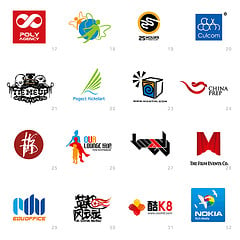Case Study: Branding Changed While the Brand Remained the Same
1. Birth of a Brand
Our example is 7-11 convenience stores. When they began, they were competing with suburban grocery stores and urban corner stores, both of which were open for the same hours as most people worked–from 9-5. The 7-11 hook was that for their customers’ convenience, they kept longer hours from 7 a.m. to 11 p.m. and that drove their branding. The name said it all. They didn’t need a slogan. The logo and colors, clear on a small lighted sign, needed to be seen before daylight and after dark.
 2. Branding (how to do the business) Changes
2. Branding (how to do the business) ChangesOther stores snapped to the hook of convenience over quality and brand promises. They started keeping longer hours. So what did 7-11 do? They stayed open round the clock in most locations. But they didn’t change their name to 24-7. They didn’t need to because they already owned the convenience store idea brand and soon everybody learned that 7-11 never closed.
What did the other stores do to compete? The groceries stayed open all the time and many of the corner stores died. Superstores sprang up and stayed open all the time offering “low prices and selection at any time” brands. 7-11 came back and promoted the idea that its smaller physical size redefined convenience as “fast in and out.” Meanwhile the superstores continued to grow as their means of competing.
3. Competition and More Branding Changes
7-11 started with good branding. Their name/logo was easy to say, to remember and see on that little lighted sign. The red and green coloring aided the idea of stop and go. Then when their competition changed, they were able to meet and exceed every change.
Back to the idea of brand and branding for a colassal finish here. 7-11 had a great brand and they were able to change their branding as the competition changed. The brand stayed the same as the branding changed.
Have you changed your branding to keep up with the competition? How has this worked out for you?
Jaco Grobbelaar, owner of BroadVision Marketing, helps business owners and business professionals put marketing strategies in place that consistently secure new clients. He can be reached at jaco@broadvisionmarketing.com or 707.799.1238. You can “Like” him at www.facebook.com/broadvisionmarketing or connect with him on www.linkedin.com/in/JacoGrobbelaar.
Share this
You May Also Like
These Related Stories
What is the Difference Between Brand and Branding?


What is the Difference Between Brand and Branding?
Tue, May 24, 2011 @ 08:41 PM
3
min read
Three Ways to Position Your Brand

Three Ways to Position Your Brand
Thu, Jan 19, 2012 @ 06:09 PM
3
min read
How To Build Your Brand With Content Marketing [Part 1]


How To Build Your Brand With Content Marketing [Part 1]
Wed, Jun 13, 2018 @ 12:34 PM
5
min read




No Comments Yet
Let us know what you think